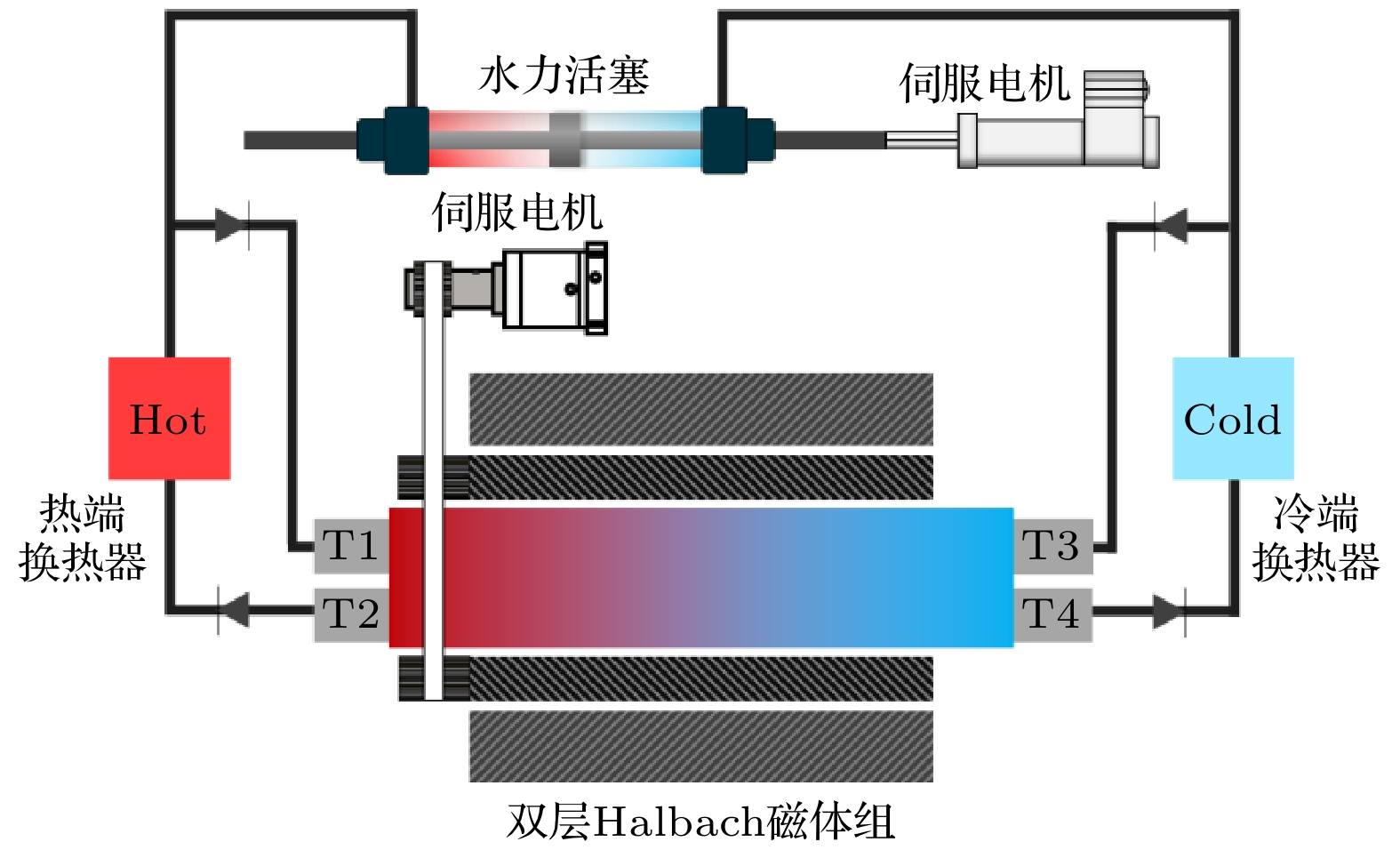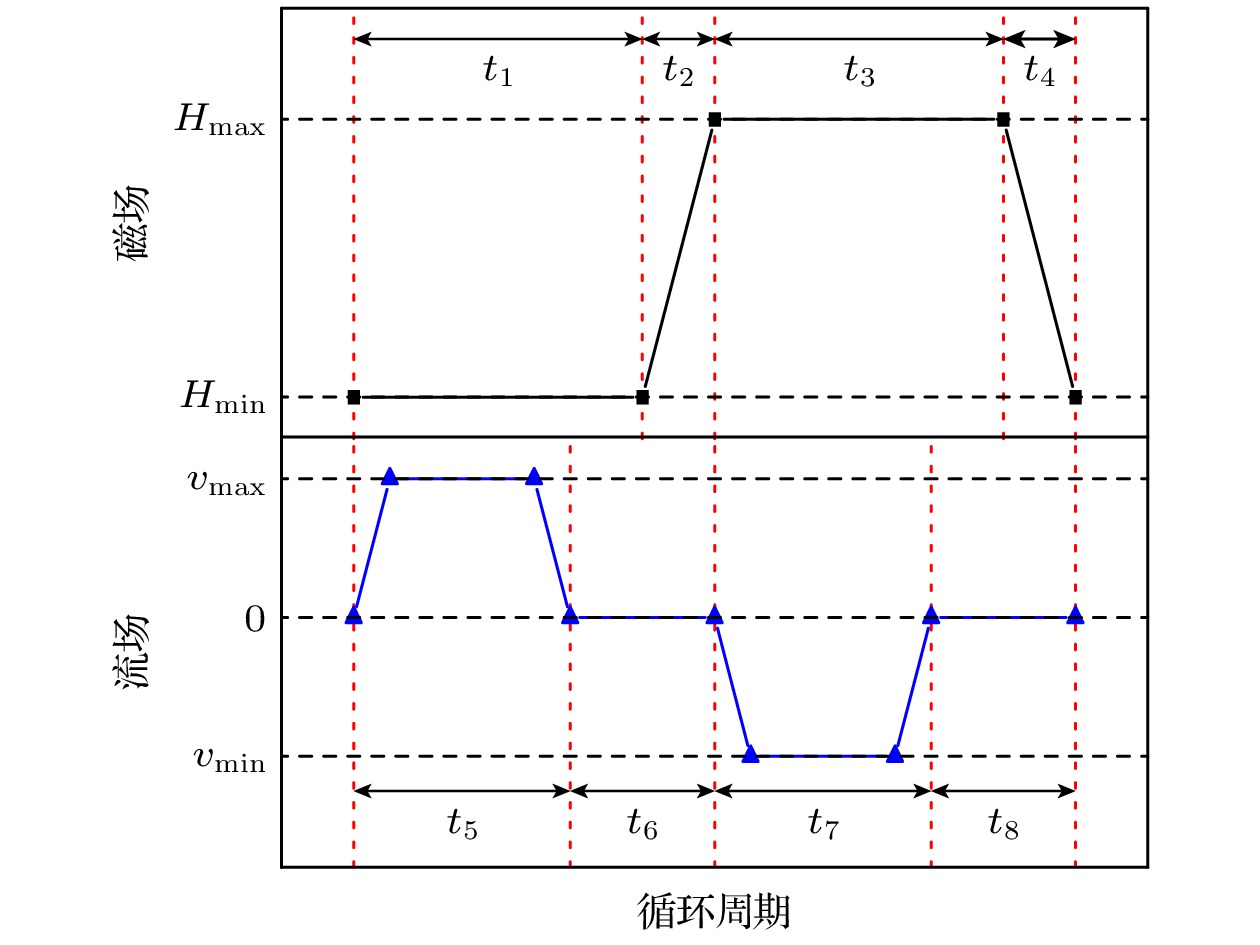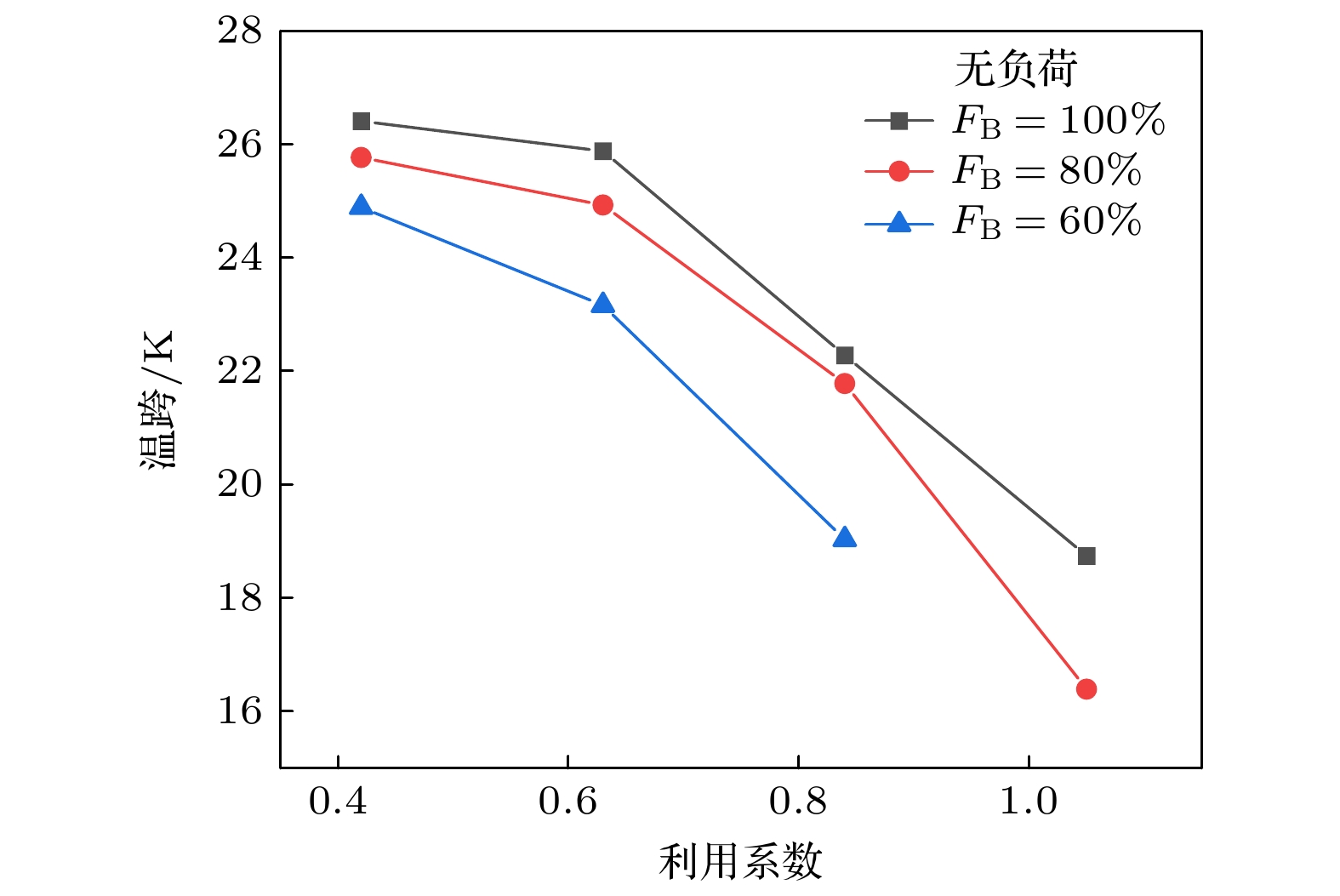Magnetic refrigeration has become a promising new technology to replace conventional vapor-compression refrigeration technology, for it has excellent application characteristics such as the high efficiency, environmental friendliness and structural simplicity. Many studies have been carried out to analyze the various subsystems, but the interaction laws between the systems are not yet clear, and the optimization of each subsystem is still an area of research worth exploring. This work is based on a compact room temperature magnetic refrigeration system developed before, and carries out experimental research on the different flow time ratio to explore the correlation among refrigeration temperature span, cooling capacity, pressure drop, coefficient of performance (COP) and blow fraction under a fixed magnetic field timing. Especially, the effects of different flow time ratios (100%, 80%, 60%) on the system performance are studied under magnetic field timing of 1∶4∶1∶4 and a frequency of 0.45 Hz. The experimental results reveal that a low utilization factor combined with a high flow time ratio can achieve a greater temperature spread, whereas a high utilization factor combined with a high flow time ratio can accomplish a bigger cooling capacity. When the utilization factor is 0.42 and the flow time ratio is 100%, the maximum unloaded cooling temperature span is 26.2 K. Meanwhile, the effects of the utilization factor and flow time ratio on the pressure drop and COP of the regenerator are studied in detail. It is discovered that raising the flow time ratio and reducing the utilization factor both result in a fall in fluid velocity, which leads the pressure to further decrease and the COP to rise. In a word, this research investigates the relationship among cooling temperature span, cooling capacity, pressure drop, COP, and flow time ratio in a fixed magnetic field timing, thus providing the groundwork for future improving the performances of room temperature magnetic refrigeration systems.














 下载:
下载:






